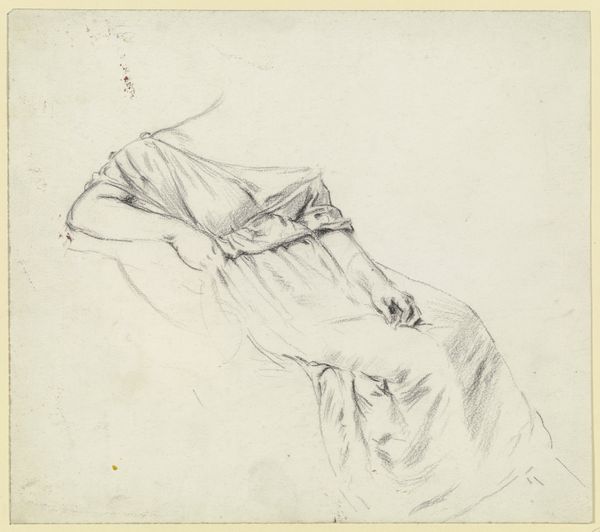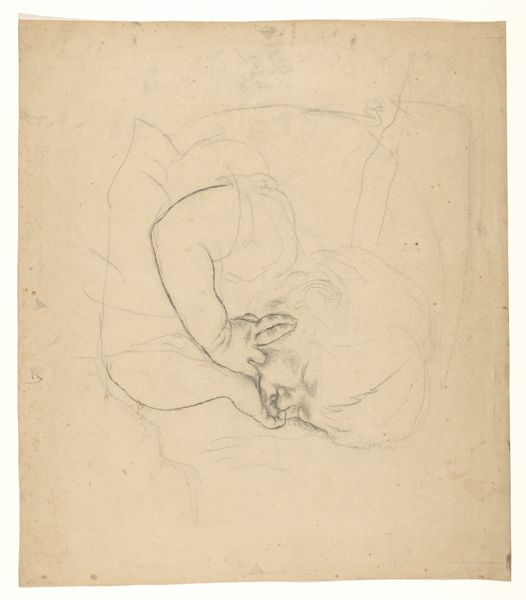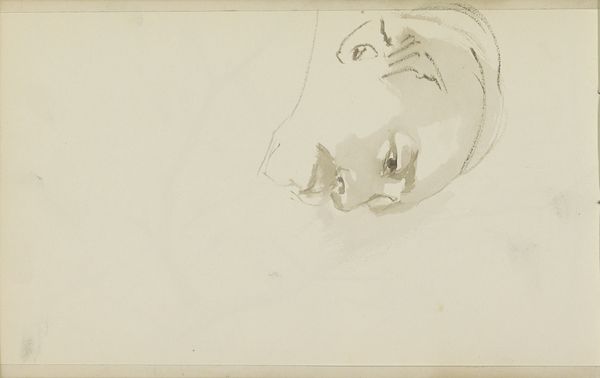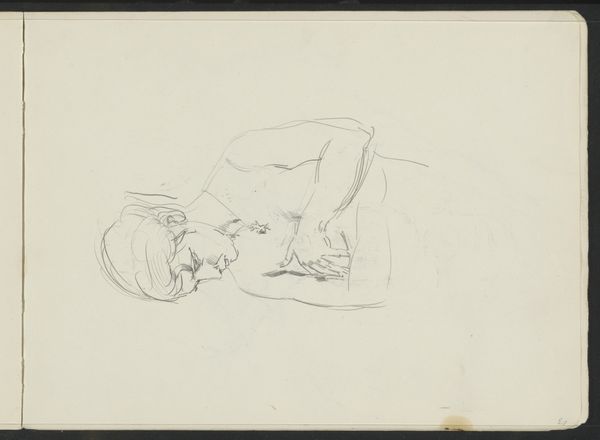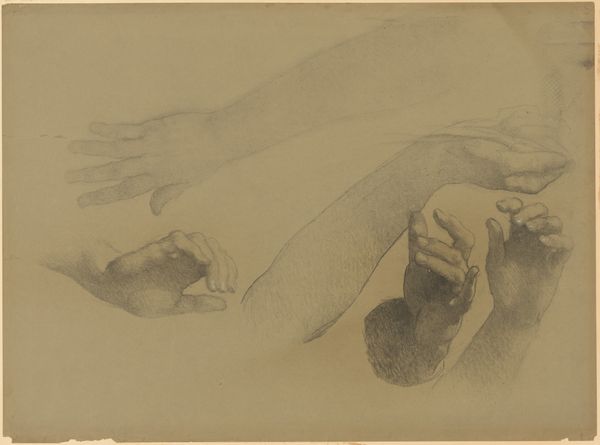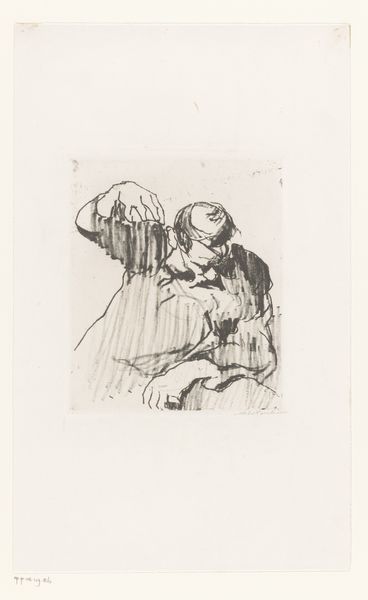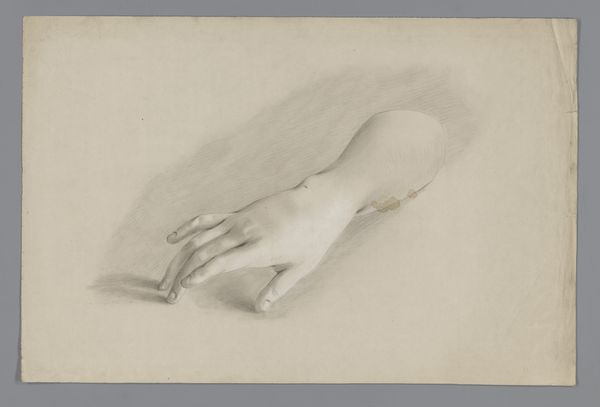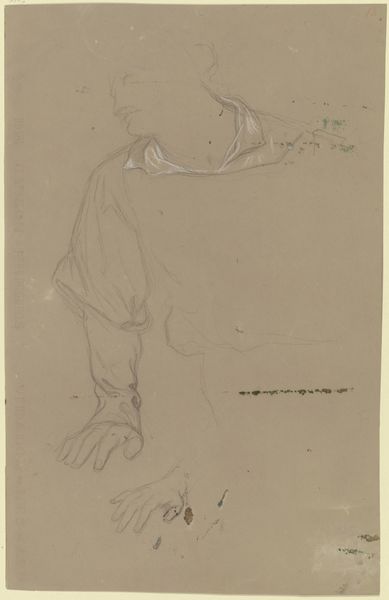
Studie van handen voor het (onvoltooide) olieverfschilderij van de Nederlandse rechtbank in Londen, juni 1942. Possibly 1942 - 1946
0:00
0:00
drawing, pencil
#
portrait
#
pencil drawn
#
drawing
#
amateur sketch
#
light pencil work
#
pencil sketch
#
personal sketchbook
#
idea generation sketch
#
pencil drawing
#
pencil
#
sketchbook drawing
#
pencil work
#
sketchbook art
#
modernism
#
realism
Copyright: Rijks Museum: Open Domain
Curator: This quiet drawing offers such an intimate moment. It's called "Study of Hands for the (Unfinished) Oil Painting of the Dutch Court in London, June 1942," attributed to Anton Abraham van Anrooy. Likely created between 1942 and 1946, this pencil sketch resides in the Rijksmuseum. Editor: Immediately, I see this not as a preliminary sketch, but a deeply evocative study of power and vulnerability. The clasped hands—is that reassurance or constraint? Curator: Well, considering the context—a Dutch court in exile in London during wartime—I imagine the weight of responsibility those hands carried. They are not just hands; they are symbols of a displaced nation. Editor: Precisely. We are seeing a very Western idea of justice at play here; but if we consider postcolonial theory, how often do such notions of “justice” actually perpetuate global inequity and support the displacement of vulnerable communities? This single gesture of hands feels far less innocent under that light. Curator: I see your point; I can almost feel the internal dialogue, the burden of judgment sketched there so faintly in pencil. But I also get a profound sense of human frailty. The lightness of the pencil strokes creates an almost ethereal quality. They could almost float away, the fate of a nation balanced so delicately on these hands. Editor: And yet, there is such undeniable authority embedded here, if you consider it. Van Anrooy's choice to highlight only these hands within the composition amplifies how deeply rooted justice systems can be in maintaining existing socio-political imbalances. We can think of legal theorist critical race theory here— Curator: Sure, the composition, framing just the hands and a hint of the jacket really places the entire narrative weight right where Anrooy wanted it. So subtle but effective, right? Like poetry. Editor: Well, seeing this, I think this delicate drawing is in fact pregnant with questions and far-reaching implications. And if you are to sit and to think a while, well, maybe that means this is exactly what the artist had hoped.
Comments
No comments
Be the first to comment and join the conversation on the ultimate creative platform.
